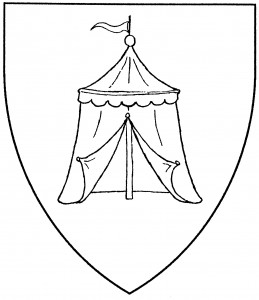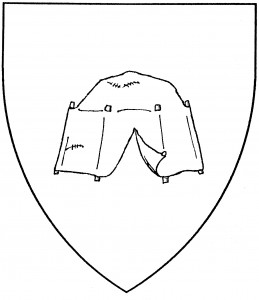A pavilion is a sumptuous tent, used for shelter at medieval tournaments. As an heraldic charge, it dates at least from 1465, in the arms of the Worshipful Company of Upholders [Bromley & Child 249]; it is also called a “sperver”, or simply a “tent”. The pavilion is usually drawn with a circular floor plan and a conical roof, as in the illustration; sometimes the roof is onion-domed. The door flaps face the viewer by default, and are tied back to reveal the interior. Larger tents, with two poles, are also found, as in the arms of von Hütte zu Heuspach, 1605 [Siebmacher 93]; such variant forms are blazoned explicitly.
The category includes such Society innovations as the “Mongolian yurt”, a form of tent consisting of skins or felt on a framework of poles. As a non-European artifact, its use in Society armory is considered a step from period practice. See also edifice.
Katherine of Adiantum bears: Ermine, a pavilion gules.
Richild la Gauchere bears: Or, five pavilions in saltire vert.
Ah Kum of the Ger-Igren bears: Per fess argent and vert, a Mongolian yurt azure.

